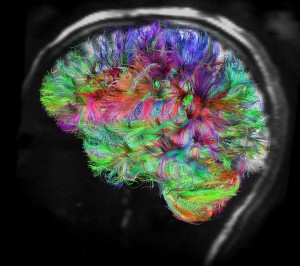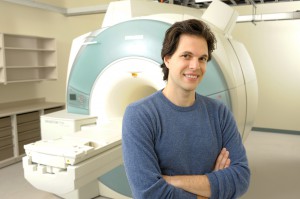Study: For cognitive training to work, it must induce neuroplasticity in brain regions that matter
 Over the last several years, cognitive training has received large amounts of public interest and support because reliably improving cognitive performance would have wide reaching applications in clinical populations, older adults, and the public at large. For example, cognitive training could play an important role in healthy aging by delaying the onset of age related cognitive decline, or by blunting the severity of decline. It could also help schizophrenic patients alleviate some of the severely debilitating cognitive symptoms of the disease, such as deficits in the executive functioning and working memory.
Over the last several years, cognitive training has received large amounts of public interest and support because reliably improving cognitive performance would have wide reaching applications in clinical populations, older adults, and the public at large. For example, cognitive training could play an important role in healthy aging by delaying the onset of age related cognitive decline, or by blunting the severity of decline. It could also help schizophrenic patients alleviate some of the severely debilitating cognitive symptoms of the disease, such as deficits in the executive functioning and working memory.
As a result of this enthusiasm, both among the scientific community and the public, many labs across the globe have sought to demonstrate how various cognitive training paradigms might improve performance on untrained tasks and abilities, a phenomenon known as transfer. Unfortunately, many cognitive training studies have found mixed results, with limited or unreliable improvements overall to untrained tasks and abilities. One important reason for the lack of replication and success in the field is an underdeveloped understanding of the basic neuroscience of training and transfer. The predominant hypothesis of how transfer occurs suggests that training will transfer to another task if the training induces some form of plasticity or change in brain regions or networks important for the untrained task. This is known as the neural overlap of training hypothesis (Jonides 2004; Nature Neuroscience; Dahlin et al. 2008; Science), and its psychological precursor has been around since Thorndike & Woodworth’s seminal papers in the early 1900s. While this hypothetical framework agrees with much the literature in cognitive neuroscience, it has not received much empirical support.
In our latest study, we attempted to test this hypothesis by examining whether the changes in brain activity that occur after training for 30 hours with Space Fortress, a complex cognitive training video game, would be predictive of individual differences in performance changes in an untrained working memory task. The Space Fortress training task is quite complex, targeting working memory, executive functioning, motor control, and attention, and certain aspects of the training are quite similar to an untrained working memory task known as the Sternberg Memory Task. Therefore, we expected to find that training induced plasticity in regions of the brain important for working memory would predict post-training improvements in an untrained working memory task, (i.e. transfer of training effects).
Once the study was completed, we found evidence supporting this assertion. Specifically, we found that changes in brain activation in the target areas, which we label as training-induced plasticity, predicted 37% of the variance in the performance changes in the untrained working memory task. This suggests that those individuals that demonstrated the greatest benefit from the training were also those on whom the training had the greatest neural impact. Furthermore, the importance of the neural impact was specific to areas of the brain already known to be involved in the cognitive construct that is involved in the untrained (transfer) task. Previous research in cognitive training has found that untrained improvements simultaneously occur with changes in brain activity in working memory associated areas, such as the caudate, an area known to be important for working memory and procedural learning (Dahlin et al. 2008), and our findings extend this research by demonstrating that this plasticity actually predicts the behavioral changes that occur after training.
In other words, cognitive training can transfer to a real-life activity when it changes the brain regions underlying performance in that real-life activity. Our findings offer some of the first confirmatory support to the neural overlap of how transfer of training occurs. Furthermore, these findings suggest that future cognitive training studies should be designed for maximum impact on brain activity. This might be achieved, for example, by combining cognitive training with an exercise regimen and using physical activity to up-regulate biomarkers associated with neuroplasticity. Similarly, during the cognitive training sessions, brain stimulation such as trans-cranial direct current stimulation ‑which has also been shown to increase levels of several biomarkers associated with neuroplasticity- might be applied.
For more information on our study, and how it relates to the current state of the cognitive training literature, please see our open access paper recently published in Frontiers in Human Neuroscience: Parietal plasticity after training with a complex video game is associated with individual differences in improvements in an untrained working memory task
 -- Aki Nikolaidis is a graduate student at the University of Illinois Urbana Champaign. His work focuses on understanding how brain plasticity contributes to learning and enhancement of cognitive abilities.
-- Aki Nikolaidis is a graduate student at the University of Illinois Urbana Champaign. His work focuses on understanding how brain plasticity contributes to learning and enhancement of cognitive abilities.
Related articles:


